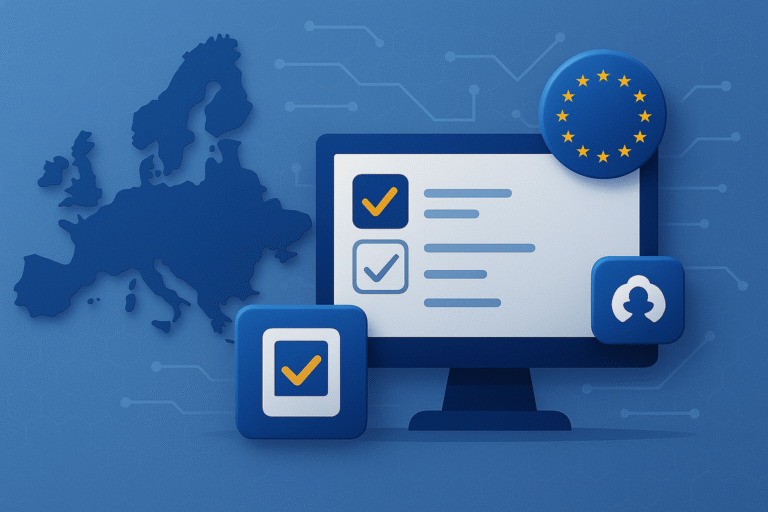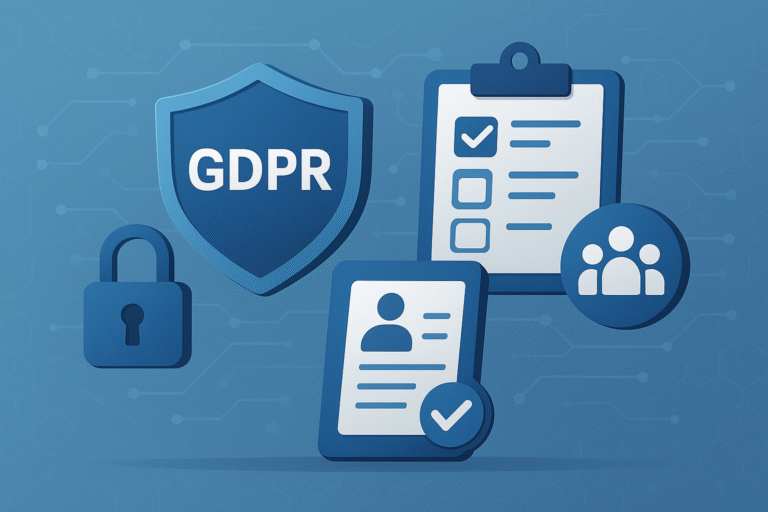
Introduction
In recent years, the debate on electronic voting has intensified, particularly regarding the need to guarantee faster, more secure, and transparent democratic processes. Blockchain, the technology behind cryptocurrencies such as Bitcoin and Ethereum, is now considered one of the most promising solutions for strengthening the integrity of digital voting systems.
👉 For broader context, you can read our introductory article on what digital democracy is and why it matters today.
1. Why Digital Voting Requires New Guarantees
Voting is the cornerstone of democracy. However, both traditional systems and centralized electronic voting face several issues:
- Risk of manipulation → centralized databases can be attacked or corrupted.
- Lack of transparency → citizens often cannot verify whether votes have been correctly counted.
- Logistical challenges → long lines at polling stations, slow counting processes, difficulties for citizens abroad or with reduced mobility.
👉 Blockchain promises to solve some of these issues by providing a distributed, immutable, and transparent system.
2. What Blockchain Is and Why It’s Different
Blockchain is a distributed digital ledger that stores transactions in blocks linked together through cryptography.
- Decentralization: no single server manages the data; instead, a network of nodes does.
- Immutability: once recorded, a vote cannot be altered or deleted.
- Verifiable transparency: all participants can check the ledger’s accuracy.
- Cryptographic security: data is protected through advanced encryption.
💡 This means that in a blockchain-based voting system, every citizen could verify that their vote has been counted without revealing their identity.
3. Applications of Blockchain in Electronic Voting
Several pilot projects and experiments have been carried out worldwide:
- Estonia: a pioneer in digital voting (though not blockchain-based), often cited as a model.
- Switzerland: has tested secure online voting applications with blockchain support.
- Sierra Leone (2018): among the first countries to test blockchain for vote tallying in a national election.
- Follow My Vote and Voatz: private platforms developing blockchain voting solutions.
👉 To deepen your understanding of digital proposals, see our guide on how to create a participatory proposal step by step.
4. Benefits of Blockchain for Voting
- Complete transparency: every vote is traceable and verifiable.
- Fraud reduction: immutability makes manipulation almost impossible.
- Accessibility: citizens can vote remotely via smartphones or computers.
- Faster results: vote counting can be nearly real-time.
- Increased trust: robust technology strengthens citizens’ confidence in democracy.
5. Challenges Ahead
- Anonymity and secrecy: ensuring verifiable yet secret ballots remains a complex challenge.
- Device security: if a voter’s device is compromised, even a secure system becomes vulnerable.
- Scalability: public blockchains may struggle with speed and transaction costs.
- Digital divide: not all citizens have access or skills to vote digitally.
- Political and cultural acceptance: adopting new voting systems requires trust and consensus.
6. Possible Solutions and Future Outlook
- Hybrid or private blockchains: faster and more scalable than public ones.
- Digital identity systems: ensuring unique yet anonymous votes (e.g., SPID in Italy, eID in Europe).
- Smart contracts: automated vote validation and tallying.
- Independent auditing: external checks to guarantee reliability and security.
💡 In the future, blockchain could be combined with artificial intelligence (to detect anomalies) or biometrics (for secure voter authentication).
Conclusion
Blockchain is one of the most promising technologies for the future of digital voting. Its ability to guarantee transparency, immutability, and security makes it a powerful tool to strengthen democratic trust.
With contributions from governments, institutions, and civic communities, blockchain-based voting systems could become a reality—ensuring transparent, secure, and accessible elections for all.


